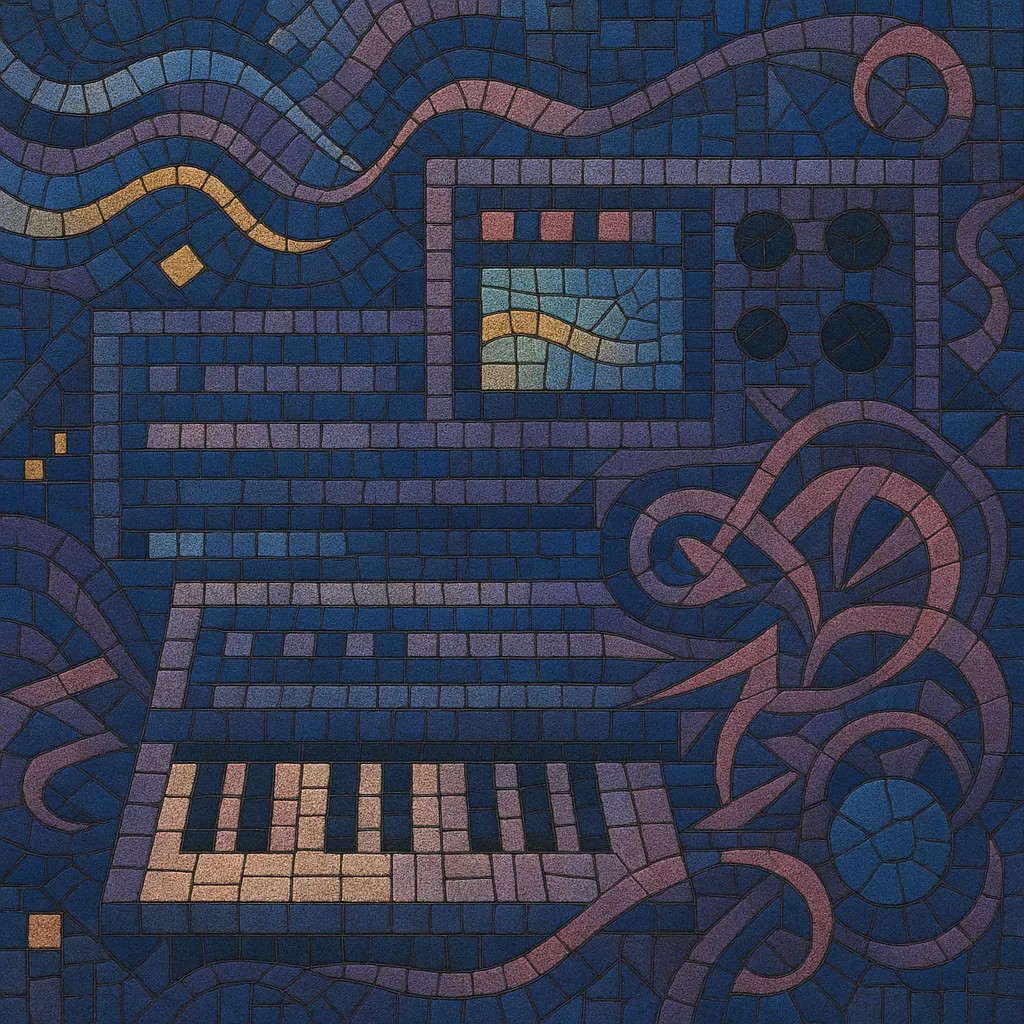
FM synthesis is a sound-design–driven electronic style built around frequency modulation techniques, where one oscillator (the modulator) alters the frequency of another (the carrier) to create complex, evolving spectra. The result is famously bright, glassy, and metallic timbres—bell tones, electric pianos, plucks, basses, and inharmonic percussion—that are difficult to achieve with subtractive or wavetable methods.
As a musical aesthetic, FM synthesis coalesced around the Yamaha DX series (especially the DX7, 1983) and later 4‑operator units like the TX81Z, spreading through 1980s pop, city pop, new age, jazz fusion, and game music. Its signature presets (e.g., "E. PIANO 1", "Lately Bass") defined the sonic palette of mid‑80s to early‑90s recordings, while FM chips in consoles and arcades shaped the sound of an entire era of video games.
Today, FM remains a distinct compositional palette: crystalline highs, punchy transient detail, and harmonically rich but precise tones that can feel both futuristic and nostalgic.
John Chowning discovered musical frequency modulation at Stanford University in 1967, publishing the technique and licensing it to Yamaha in the early 1970s. In this period FM existed largely in academic and electroacoustic circles, where computer music and modern classical composers explored its remarkably efficient route to complex spectra and inharmonic tones.
Yamaha’s first commercial FM keyboards (GS1, 1981) proved the concept, but the DX7 (1983) made FM a global phenomenon. With 6 operators, 32 algorithms, velocity sensitivity, and stable digital tuning, the DX7 delivered pristine EPs, bells, brass, and basses that immediately permeated pop, city pop, new age, smooth jazz, and film/TV scoring. Producers embraced both programming and factory presets—most famously "E. PIANO 1"—cementing FM as the defining digital sound of the mid‑1980s.
Parallel to keyboards, Yamaha FM chips powered arcades and consoles: YM2151 in many arcade boards, YM2612 in the Sega Mega Drive/Genesis, and OPL2/OPL3 in PC sound cards. Composers leveraged FM’s percussive transients and crisp spectra to cut through limited speakers, establishing the iconic timbre of 16‑bit era soundtracks.
Yamaha’s SY/TG series blended AFM (Advanced FM) with sample‑based AWM, enabling layered, more lush textures. While romplers and virtual analogs took market share in the 1990s, FM persisted in jazz fusion, contemporary classical, and game music, and migrated into software (e.g., NI FM8, Ableton Operator), which made deep programming approachable.
A broader 1980s revival (vaporwave, future funk, synth‑pop renewals) renewed appreciation for FM’s glassy EPs and rubbery basses. Boutique hardware (Korg opsix, Elektron Digitone) and open‑source tools (Dexed) further democratized FM. Today, FM is both a timeless sound‑design method and a recognizable stylistic signature—equally at home in nostalgic throwbacks and cutting‑edge electronic production.

